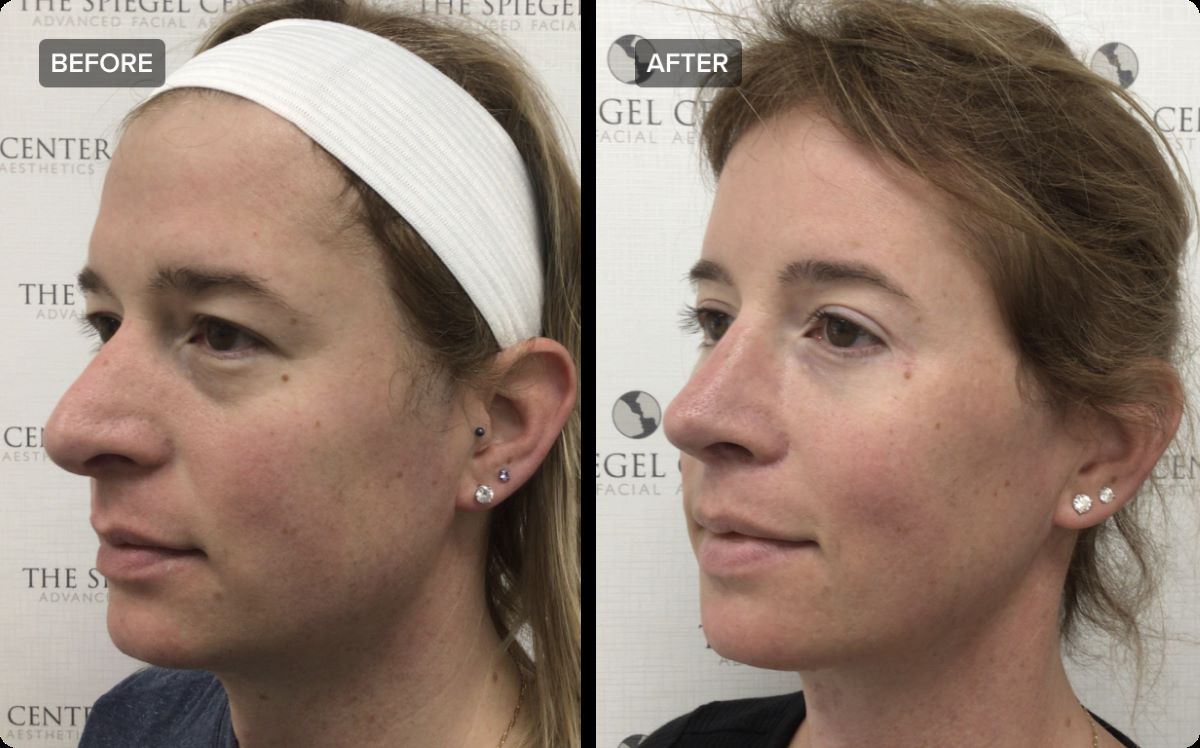Home>Finance>What Dermatology Services Are Covered By Insurance


Finance
What Dermatology Services Are Covered By Insurance
Published: November 24, 2023
Find out which dermatology services are covered by insurance and how you can finance your treatments. Don't worry about the cost, we've got you covered!
(Many of the links in this article redirect to a specific reviewed product. Your purchase of these products through affiliate links helps to generate commission for LiveWell, at no extra cost. Learn more)
Table of Contents
- Introduction
- Understanding Dermatology Services
- Types of Dermatology Services Covered by Insurance
- Common Dermatology Procedures Covered by Insurance
- Criteria for Insurance Coverage of Dermatology Services
- Pre-authorization and Prior Approval for Dermatology Services
- Tips for Maximizing Insurance Coverage for Dermatology Services
- Conclusion
Introduction
Welcome to our comprehensive guide on understanding the coverage of dermatology services by insurance. Taking care of our skin is not just a matter of beauty but also a crucial element of our overall health. Dermatology services play a vital role in diagnosing and treating various skin conditions, from acne and eczema to skin cancer. However, the cost of dermatological treatments can often be a concern for individuals seeking these services.
Fortunately, many insurance plans offer coverage for dermatology services, which can help ease the financial burden of seeking necessary treatment. Understanding what dermatology services are covered by insurance is essential for effectively managing your healthcare expenses and ensuring that you receive the care you need.
In this guide, we will explore the different types of dermatology services that are typically covered by insurance, including common procedures and treatments. We will also discuss the criteria that insurance companies use to determine coverage for these services, as well as the process of pre-authorization and prior approval. Finally, we will provide some tips on how to maximize your insurance coverage for dermatology services.
So, whether you are considering a routine skin check-up or need specialized treatment for a skin condition, this guide will help you navigate the complexities of insurance coverage for dermatology services. Let’s dive in and explore the world of dermatology and insurance together.
Understanding Dermatology Services
Dermatology is a branch of medicine that focuses on the diagnosis, treatment, and prevention of conditions related to the skin, hair, nails, and mucous membranes. Dermatologists are medical professionals who specialize in these areas and are trained to provide comprehensive care for a wide range of dermatological issues.
When it comes to dermatology services, there are various categories that encompass different types of care. Here are some key areas typically covered by dermatology services:
- General Dermatology: This involves routine skin examinations, diagnosis, and treatment of common skin conditions like acne, eczema, psoriasis, and rosacea.
- Cosmetic Dermatology: This focuses on aesthetic procedures to improve the appearance of the skin, such as Botox, dermal fillers, chemical peels, and laser treatments for hair removal or skin rejuvenation.
- Surgical Dermatology: This includes surgical procedures to remove skin cancers, cysts, moles, and other skin lesions.
- Mohs Surgery: A specialized surgical technique used for the treatment of skin cancer that involves precise removal of affected tissue layer by layer until all cancer cells are gone.
- Pediatric Dermatology: This focuses on the diagnosis and treatment of skin conditions in infants, children, and adolescents.
- Dermatopathology: This involves the microscopic examination of skin tissue samples to diagnose skin diseases.
Understanding the different categories of dermatology services can help you identify the specific type of care you require and ensure that you seek appropriate treatment. Whether you are dealing with a common skin issue or a more complex condition, dermatologists can evaluate your symptoms, provide an accurate diagnosis, and recommend an appropriate course of action.
Now that we have a better understanding of what dermatology services entail, let’s delve into the types of services that are commonly covered by insurance.
Types of Dermatology Services Covered by Insurance
Insurance coverage for dermatology services can vary depending on the specific insurance plan and the terms and conditions set by the insurance provider. However, there are several types of dermatology services that are commonly covered by insurance. These services include:
- Diagnostic Services: Insurance plans typically cover diagnostic procedures, such as skin biopsies, patch testing, and allergy testing, which are essential for identifying and diagnosing various skin conditions.
- Treatment for Skin Diseases: Insurance coverage often includes treatment for common skin diseases like acne, eczema, psoriasis, and rosacea. Medications, topical creams, and other prescribed treatments for managing these conditions are typically covered.
- Skin Cancer Diagnosis and Treatment: Insurance plans generally provide coverage for skin cancer screenings, including mole mapping and regular check-ups. Additionally, treatments for skin cancer, such as surgical removal of cancerous lesions, radiation therapy, and chemotherapy, are usually covered as well.
- Preventive Services: Some insurance plans include coverage for preventive dermatology services, such as annual skin exams and screenings. Detecting potential issues early on can help prevent more serious skin conditions from developing.
- Surgical Procedures: Insurance may cover various surgical procedures performed by dermatologists, including the removal of skin tags, cysts, warts, and benign tumors, as well as Mohs surgery for the treatment of skin cancer.
- Phototherapy: Certain insurance plans provide coverage for phototherapy, a treatment that uses ultraviolet light to manage conditions like psoriasis, vitiligo, and eczema.
It’s important to note that the level of coverage for these services can vary, depending on factors such as your insurance plan’s network of providers, deductible, copayments, and coinsurance. Additionally, some procedures may require pre-authorization or prior approval from your insurance company to ensure coverage.
In the next section, we will take a closer look at the criteria that insurance companies consider when determining coverage for dermatology services.
Common Dermatology Procedures Covered by Insurance
Insurance coverage for dermatology procedures can vary depending on the specific insurance plan and the medical necessity of the procedure. While coverage may differ, there are several common dermatology procedures that are often covered by insurance.
Here are some of the typical dermatology procedures that insurance plans often cover:
- Skin Biopsy: A skin biopsy is a procedure where a small piece of skin tissue is removed and sent to a laboratory for analysis. Insurance plans generally cover skin biopsies when they are medically necessary to diagnose skin conditions or evaluate skin cancer.
- Excision of Skin Lesions: Excision refers to the surgical removal of skin lesions such as moles, cysts, skin tags, or other benign tumors. Insurance plans typically cover these procedures when they are performed to remove lesions that are causing symptoms or are at risk of becoming cancerous.
- Mohs Surgery: Mohs surgery is a specialized procedure used to treat skin cancer. It involves removing layers of cancerous skin tissue one at a time and examining them under a microscope to ensure complete removal while preserving healthy tissue. Insurance plans generally cover Mohs surgery for the treatment of skin cancer.
- Cryotherapy: Cryotherapy involves the application of extreme cold to destroy abnormal or diseased skin cells. It is commonly used to treat warts, precancerous skin lesions, and certain types of skin cancer. Insurance plans often cover cryotherapy when it is deemed medically necessary.
- Phototherapy: Phototherapy, also known as light therapy, uses specific wavelengths of light to treat skin conditions such as psoriasis, vitiligo, and eczema. Insurance plans may cover phototherapy when it is prescribed by a dermatologist and considered medically necessary.
- Laser Therapy: Laser therapy is a non-invasive procedure that uses focused light to target specific skin concerns such as acne scars, birthmarks, or unwanted hair. While coverage for laser therapy varies depending on the insurance plan and the specific condition being treated, some insurance plans may provide partial or full coverage.
It’s important to keep in mind that insurance coverage for dermatology procedures is typically based on medical necessity. This means that the procedure must be deemed necessary by a dermatologist and supported by clinical evidence. Coverage may also depend on the terms and conditions of your insurance plan, including any deductibles, copayments, or coinsurance.
In the next section, we will discuss the criteria that insurance companies use to determine coverage for dermatology services.
Criteria for Insurance Coverage of Dermatology Services
Insurance companies have specific criteria for determining coverage of dermatology services. Understanding these criteria can help you navigate the insurance process and ensure that you receive the maximum coverage for your dermatology needs. While the exact criteria may vary between insurance providers, some common factors that influence coverage include:
- Medical Necessity: One of the primary factors insurance companies consider is the medical necessity of the dermatology service or procedure. It must be established that the service or procedure is essential for the diagnosis, treatment, or management of a specific skin condition or disease.
- Evidence-Based Practices: Insurance companies typically rely on evidence-based guidelines and medical literature to determine the effectiveness and appropriateness of a particular dermatology service or procedure. The service or procedure must align with accepted medical practices and have proven efficacy.
- Prior Authorization: Some dermatology services, especially those that are more expensive or invasive, may require prior authorization from the insurance company. This means that your healthcare provider must obtain approval from the insurance company before proceeding with the service or procedure. Failure to obtain prior authorization may result in denial of coverage.
- In-Network Providers: Insurance plans often have a network of preferred providers. To maximize coverage, it is recommended to seek dermatology services from healthcare providers within your insurance plan’s network. Out-of-network providers may result in reduced coverage or higher out-of-pocket costs.
- Copayments and Deductibles: Insurance plans typically have copayments, deductibles, and coinsurance requirements. Copayments are fixed amounts you pay for each visit or procedure, while deductibles are the amount you must pay out-of-pocket before your insurance coverage kicks in. Understanding your plan’s financial responsibilities can help you anticipate costs associated with dermatology services.
- Referrals: Some insurance plans require a referral from your primary care physician or a designated specialist before receiving dermatology services. Make sure to check if your plan requires a referral and follow the necessary steps to ensure proper coverage.
It’s crucial to review your individual insurance plan’s coverage details, policy documents, and contact your insurance provider directly for specific information about the criteria they use to determine coverage for dermatology services. This will help ensure that you have a clear understanding of what is covered and any potential limitations or requirements.
Next, let’s discuss the process of pre-authorization and prior approval for dermatology services.
Pre-authorization and Prior Approval for Dermatology Services
Pre-authorization and prior approval are processes that insurance companies use to determine coverage for certain dermatology services. These processes help ensure that the services or procedures are medically necessary and meet the criteria set by the insurance provider. Understanding these processes is important to avoid unexpected denials or out-of-pocket expenses.
Pre-authorization involves obtaining approval from the insurance company before receiving a specific dermatology service or procedure. Your healthcare provider will typically initiate this process by submitting documentation, such as medical records, test results, and a detailed treatment plan, to the insurance company. The insurance company will then review the information and assess whether the requested service meets the criteria for coverage.
Prior approval is similar to pre-authorization, but it is typically required for more complex or expensive dermatology procedures. This process may involve additional documentation, such as a detailed explanation of medical necessity, supporting evidence, and sometimes a review by a medical expert hired by the insurance company. It’s important to note that elective or cosmetic procedures are generally not eligible for pre-authorization or prior approval.
When considering dermatology services that require pre-authorization or prior approval, it is essential to follow these steps:
- Consult Your Dermatologist: Discuss your treatment plan with your dermatologist and confirm if pre-authorization or prior approval is necessary for the recommended services.
- Contact Your Insurance Provider: Reach out to your insurance provider to understand the specific requirements for pre-authorization or prior approval. They can provide you with the necessary forms and inform you about any additional documentation required.
- Submit Required Documentation: Work with your healthcare provider to ensure all relevant medical records, test results, and treatment plans are submitted to the insurance company within the designated timeframe. Be sure to provide accurate and detailed information to support the medical necessity of the requested services.
- Follow Up: Once the pre-authorization or prior approval request has been submitted, stay in touch with your healthcare provider and insurance company to monitor the progress of the review process. Follow up to ensure that the approval is obtained before scheduling or receiving the dermatology service.
- Confirm Coverage: Even after obtaining pre-authorization or prior approval, it is advisable to confirm coverage with your insurance provider to understand your financial responsibilities, such as copayments, deductibles, or coinsurance.
By understanding and following the pre-authorization and prior approval process, you can navigate the insurance system more effectively and avoid unexpected denials or financial burdens.
Next, let’s explore some tips for maximizing insurance coverage for dermatology services.
Tips for Maximizing Insurance Coverage for Dermatology Services
Maximizing your insurance coverage for dermatology services can help ease the financial burden of seeking necessary treatments and procedures. Here are some tips to help you make the most of your insurance benefits:
- Understand Your Insurance Plan: Familiarize yourself with the details of your insurance plan, including coverage limits, copayments, deductibles, and any specific requirements for dermatology services. Knowing what is covered and any potential out-of-pocket expenses will help you plan your healthcare expenses.
- Stay In-Network: Choose dermatologists and healthcare providers who are in-network with your insurance plan. In-network providers have negotiated contracted rates with the insurance company, which can result in lower costs for you.
- Get Referrals When Required: If your insurance plan requires referrals for dermatology services, obtain them from your primary care physician or a designated specialist. Failing to get a referral may result in reduced coverage or denial of payment.
- Be Aware of Pre-Authorization Requirements: Understand which dermatology services require pre-authorization or prior approval from your insurance company. Work closely with your healthcare provider to ensure all necessary documentation is submitted in a timely manner to avoid coverage delays or denials.
- Opt for Medically Necessary Services: Focus on dermatology services that are deemed medically necessary to treat a specific skin condition or disease. Insurance plans are more likely to cover services that are supported by medical evidence and guidelines.
- Maintain Detailed Records: Keep a record of all your dermatology-related appointments, procedures, test results, and communications with your healthcare provider and insurance company. This documentation will come in handy when discussing coverage or appealing a denial.
- Review Your Explanation of Benefits (EOB): Carefully review the EOB statements from your insurance company for any dermatology services you have received. Ensure that the charges and payment details are accurate and align with your coverage benefits.
- Appeal if Necessary: If your insurance company denies coverage for a dermatology service that you believe should be covered, don’t hesitate to file an appeal. Provide any additional supporting documentation and explanations to strengthen your case.
- Consider Flexible Spending Accounts (FSAs) or Health Savings Accounts (HSAs): If available to you, FSAs or HSAs can be used to set aside pre-tax funds for eligible medical expenses, including dermatology services not covered by insurance. Utilizing these accounts can help offset out-of-pocket costs.
By following these tips, you can navigate the complexities of insurance coverage for dermatology services and optimize your benefits. Remember to ask questions, stay informed, and advocate for yourself to ensure you receive the dermatological care you need while minimizing your financial obligations.
Lastly, let’s summarize what we’ve learned in this guide.
Conclusion
Navigating insurance coverage for dermatology services can be a daunting task, but understanding the types of services covered, the criteria used by insurance companies, and the processes of pre-authorization and prior approval can greatly assist you in maximizing your benefits. Dermatology services are crucial for maintaining healthy skin and addressing various skin conditions, and having insurance coverage can alleviate the financial burden associated with these treatments.
In this comprehensive guide, we explored the different categories of dermatology services, including general dermatology, cosmetic dermatology, surgical procedures, and more. We also discussed common dermatology procedures that are typically covered by insurance, such as skin biopsies, excisions, Mohs surgery, and phototherapy.
Understanding the criteria used by insurance companies is essential to determine the coverage for dermatology services. Factors like medical necessity, evidence-based practices, and in-network providers play a crucial role in determining the coverage eligibility. We also highlighted the significance of pre-authorization and prior approval processes, where obtaining approval from the insurance company is necessary before receiving certain dermatology services.
To make the most of your insurance coverage for dermatology services, we provided useful tips, such as understanding your insurance plan, staying in-network, getting referrals when required, and maintaining detailed records. We also emphasized the importance of reviewing your Explanation of Benefits (EOB) statements, appealing denials if necessary, and considering flexible spending accounts (FSAs) or health savings accounts (HSAs) to offset out-of-pocket costs.
Remember that each insurance plan is unique, and coverage may vary. It is crucial to review your specific insurance policy and consult with your insurance provider for detailed information about your coverage.
By utilizing the knowledge and strategies outlined in this guide, you can navigate the complexities of insurance coverage for dermatology services with confidence, ensuring that you receive the necessary care while optimizing your benefits. Prioritizing your skin health is not only beneficial for your appearance but also for the overall well-being of your body. So, take care of your skin, and let your insurance coverage support you in your journey to healthy and radiant skin.














